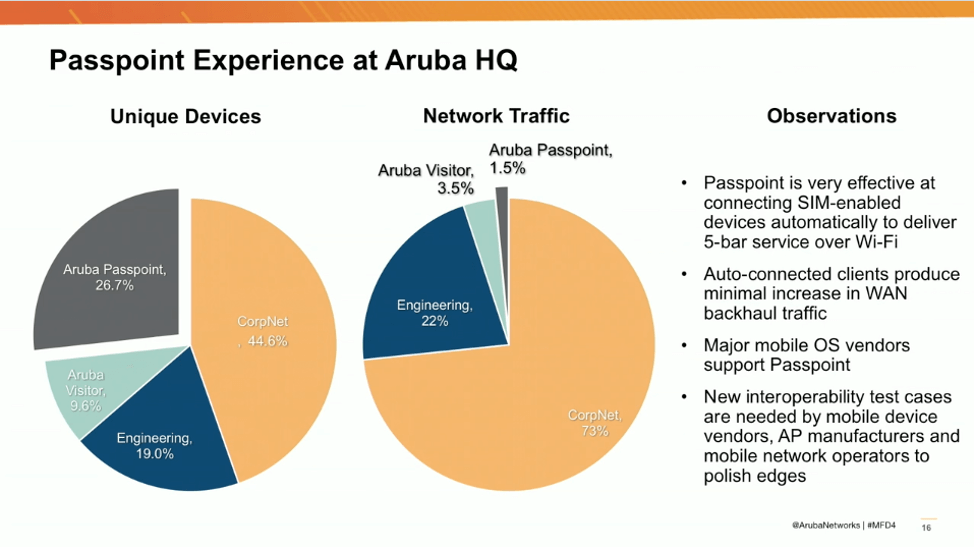
In this final post of our series on Passpoint, we will look at why and where we would use Passpoint and what advantages we get from it. In the first post, we discussed what Passpoint is and gave some very quick examples of use cases but let’s look at more examples including enterprise networks, large public venue, hospitality, and airports.
Enterprise Networks
Enterprise networks pose an interesting use case for Passpoint. In most enterprise networks today, a mobility network is set up for corporate-owned devices using services such as softphone, web conferencing, and video calling. This traffic resides within the corporate infrastructure and communicates with the corporate cloud environment, either on-prem or off-prem. Employee-owned mobile devices are a whole other story within enterprise networks today.
Bring your own device (BYOD) was the trend in enterprise networking starting eight years or more ago and has continued but in a different way today. BYOD networks require back-end security infrastructures such as Aruba ClearPass, network segmentation rules via firewalls or similar devices, DHCP and DNS setup managed by internal IT, and Active Directory to verify user accounts, just to name a few services needed.
With a Passpoint network in the enterprise, the wireless network is secured by the carrier side. Using Aruba ClearPass, role-based access control can be accomplished and allow users that meet certain criteria to access internal resources while connected to the Passpoint network, making this a seamless move from external carrier-based cellular to in-building Wi-Fi without any interactions from the end user.
Following these same threads in the enterprise, Passpoint is a built-in guest network hosted outside the corporate infrastructure.
Large Public Venue
Today, most large public venues offer some sort of Wi-Fi connectivity. Usually through a captive portal, users are asked for an email or some sort of information or to accept terms and conditions for the use of the wireless. This takes multiple systems in the back-end to support and keep up with.
With Passpoint, a wireless network will be broadcast that supports Passpoint, and, much like in the other blogs we discussed, the users will seamlessly connect to the network that is supported by their carrier (if it is supported). This gives the ability for thousands of users to ‘just join’ and not even realize they are no longer on cellular connectivity. There are several stadiums, airports, and other large public venues currently using this setup. Those of us who attended the Aruba Atmosphere event in Las Vegas in 2019 also connected to it and may not have even realized it.
In a presentation given for Mobility Field Day 4 by Chuck Lukaszewski, Aruba did a quick demo of Passpoint running in its corporate headquarters’ executive briefing center. Chuck also provided stats on the amount of data passed on the Passpoint system and the amount of network traffic this created to show the low impact on the backhaul while using Passpoint.
As is shown in the graphic, more than 26% of the unique devices on the network were using the Passpoint network with only a 1.5% hit in network traffic. In comparison, look at the Corpnet devices (44.6%) vs. Corpnet data (73%). This is fairly insignificant to the overall network in terms of traffic. The only thing that was not made clear was the amount of active usage of the Passpoint network vs. the Corpnet, types of traffic, etc.
Wrapping It All Up
In this series of posts, we have looked at the overview of Passpoint, the underlying architecture, how to deploy Passpoint, the bridge to 5G, and some use cases for the technology.
Passpoint is at the heart of Aruba's cellular offload solution that carriers have been looking for the last few years as the numbers of mobile device users continue to climb. Passpoint is beginning to become more prevalent in the marketplace and with 5G set to really start ramping up over the next few years, this hotspot technology will likely see an increase for in-building connectivity replacing the older distributed antenna system (DAS) technologies that are currently deployed.





